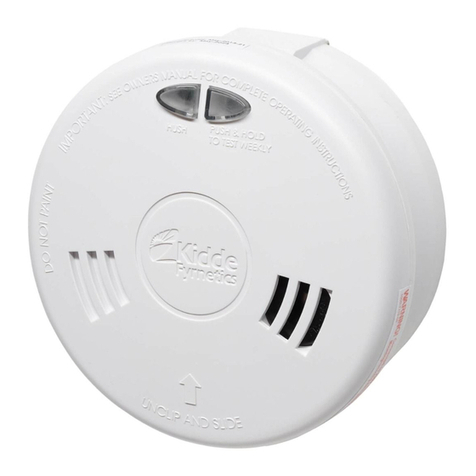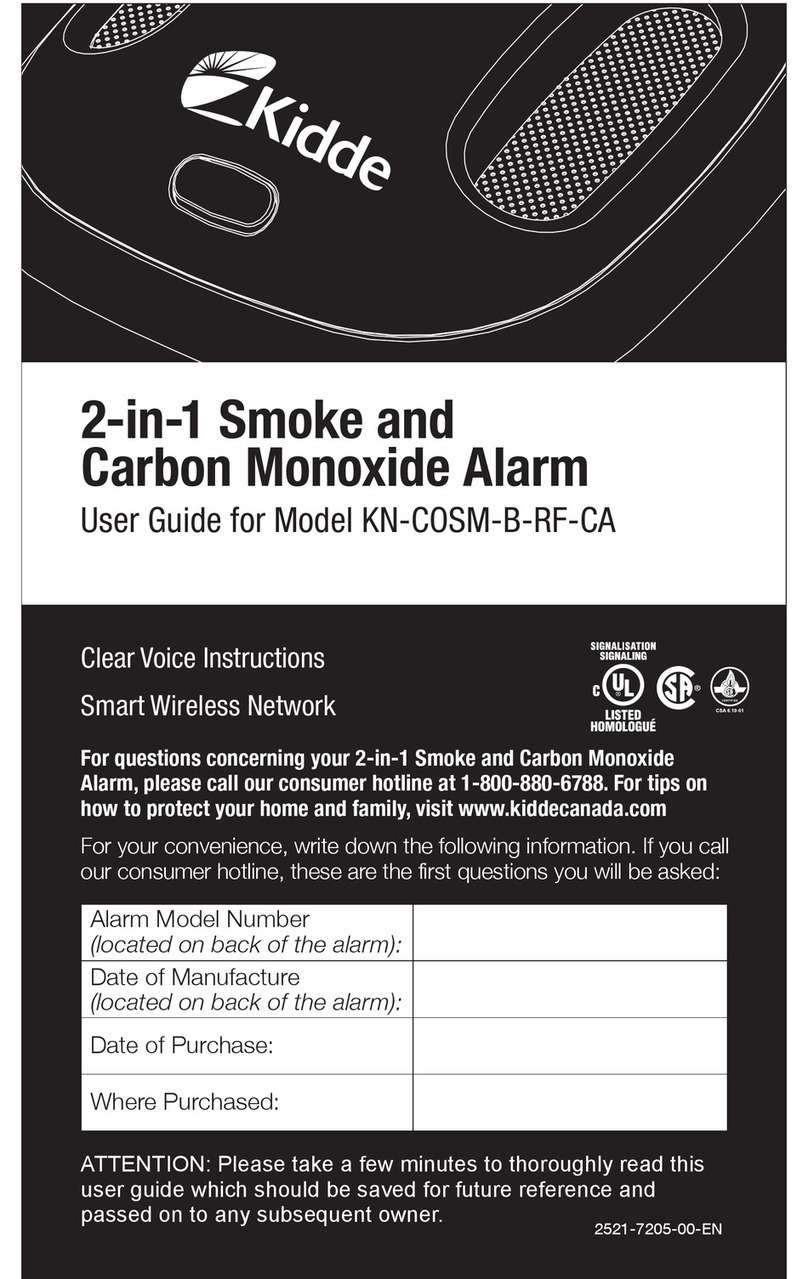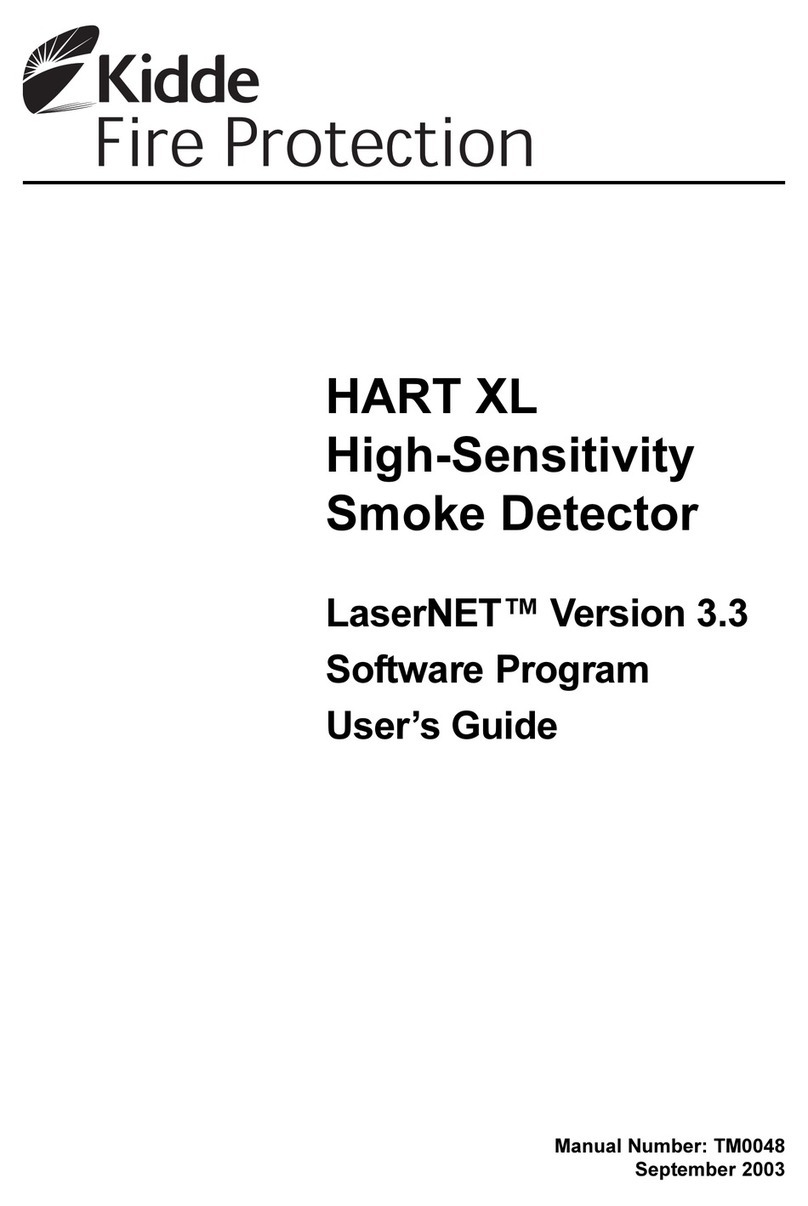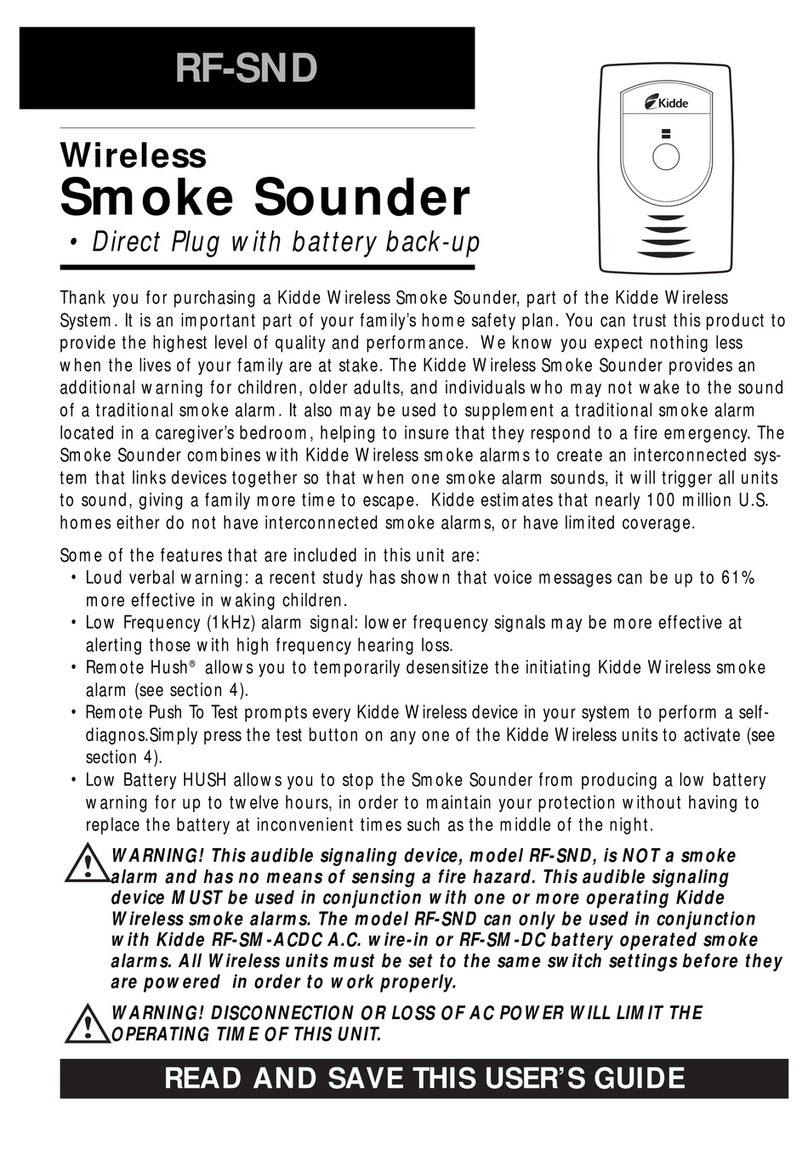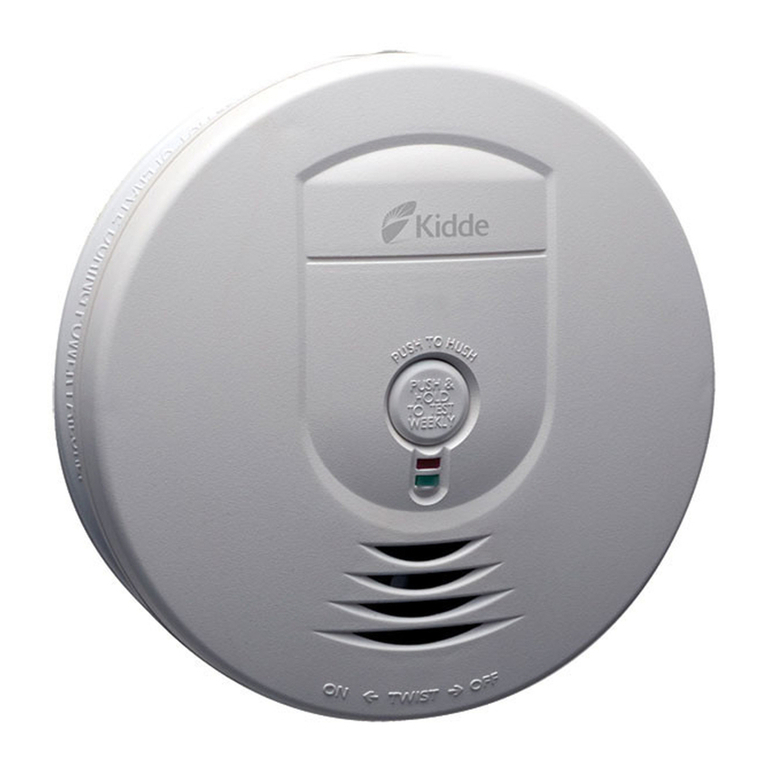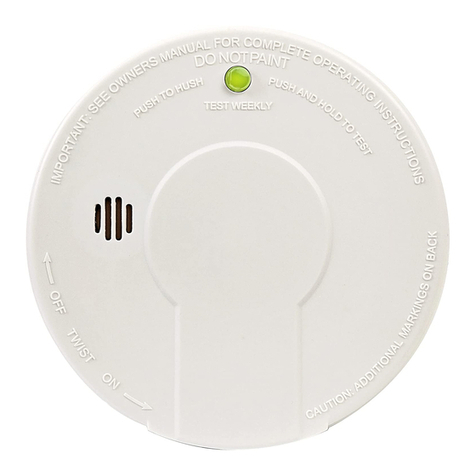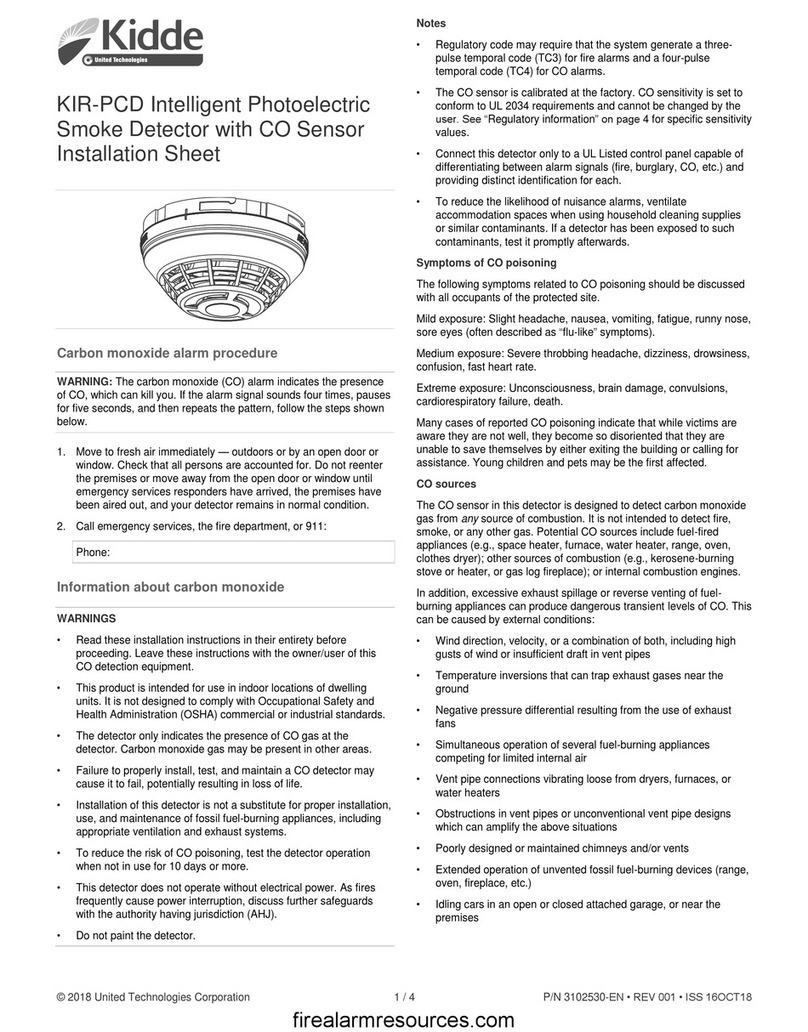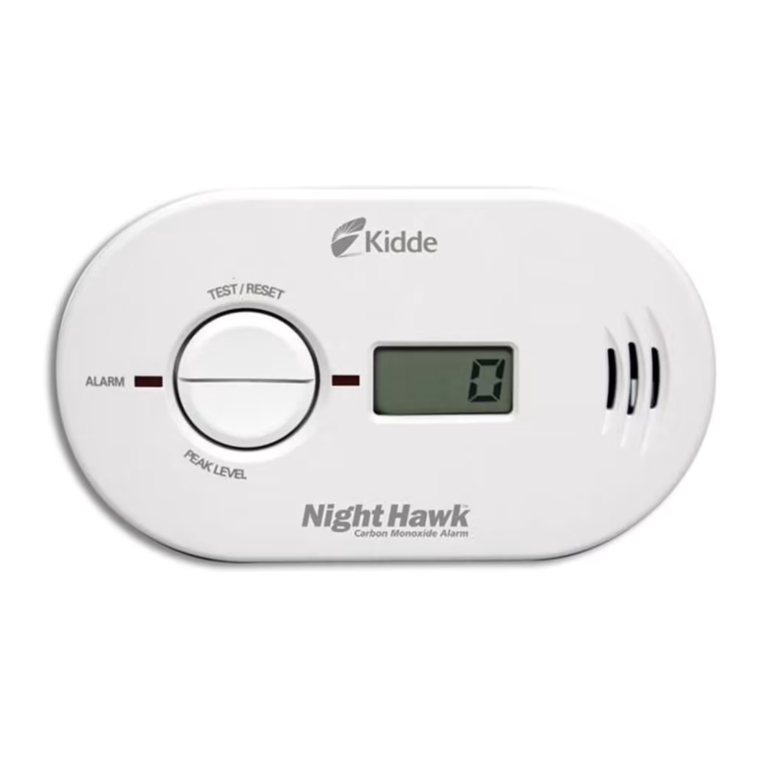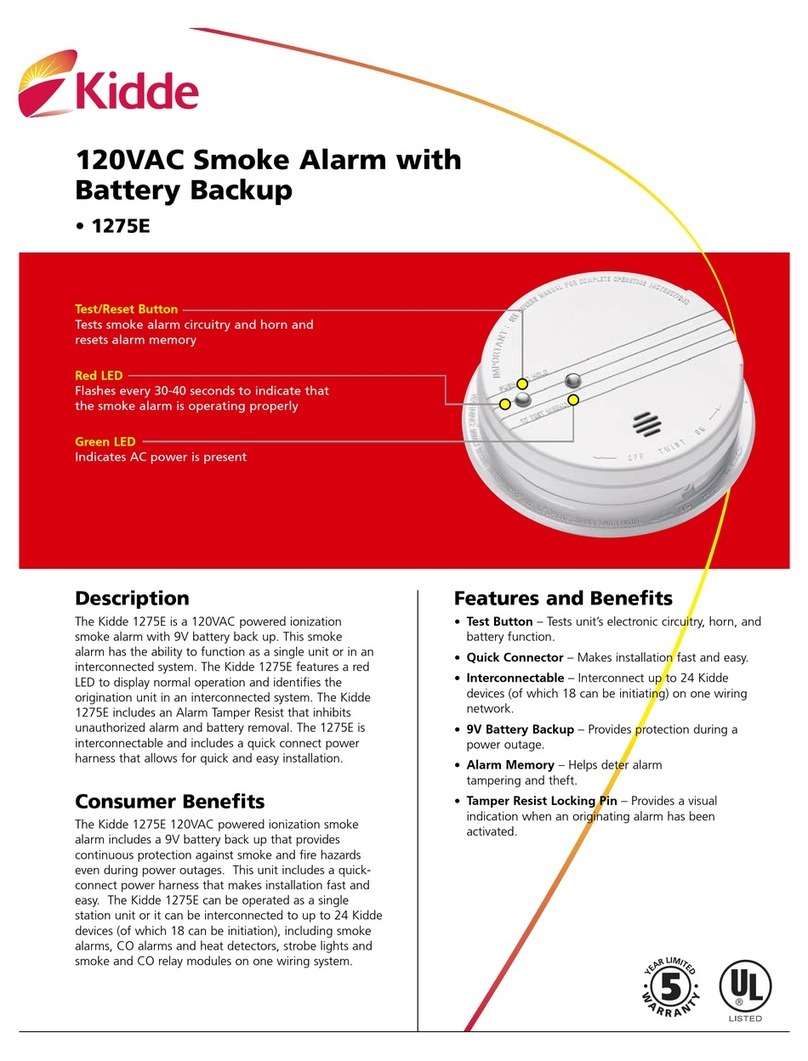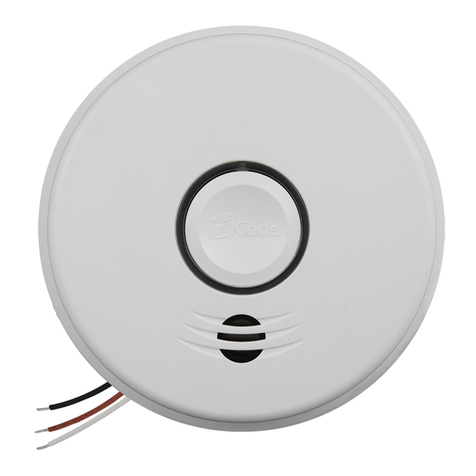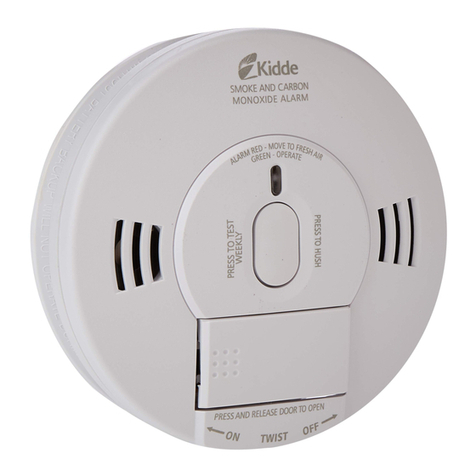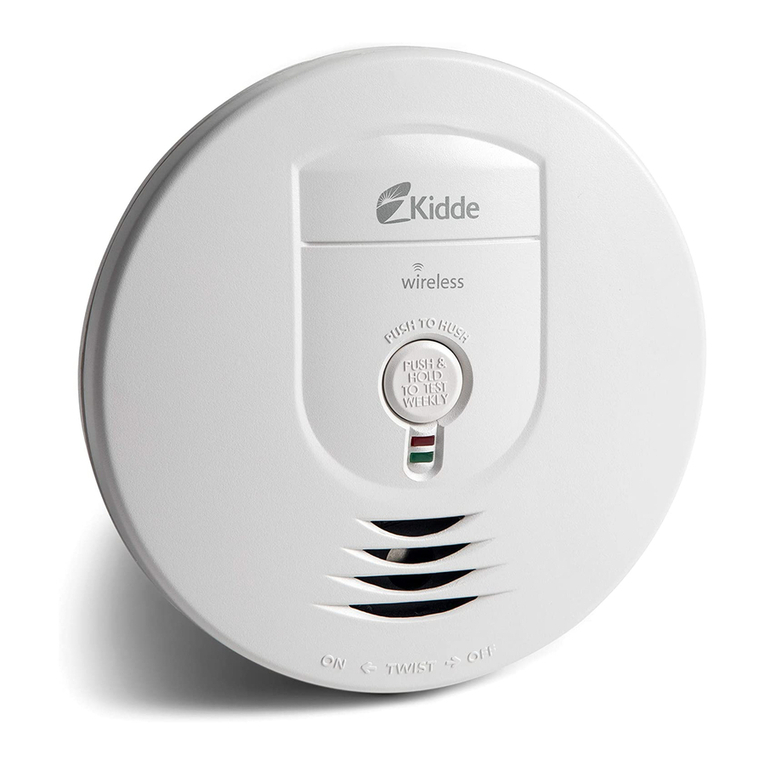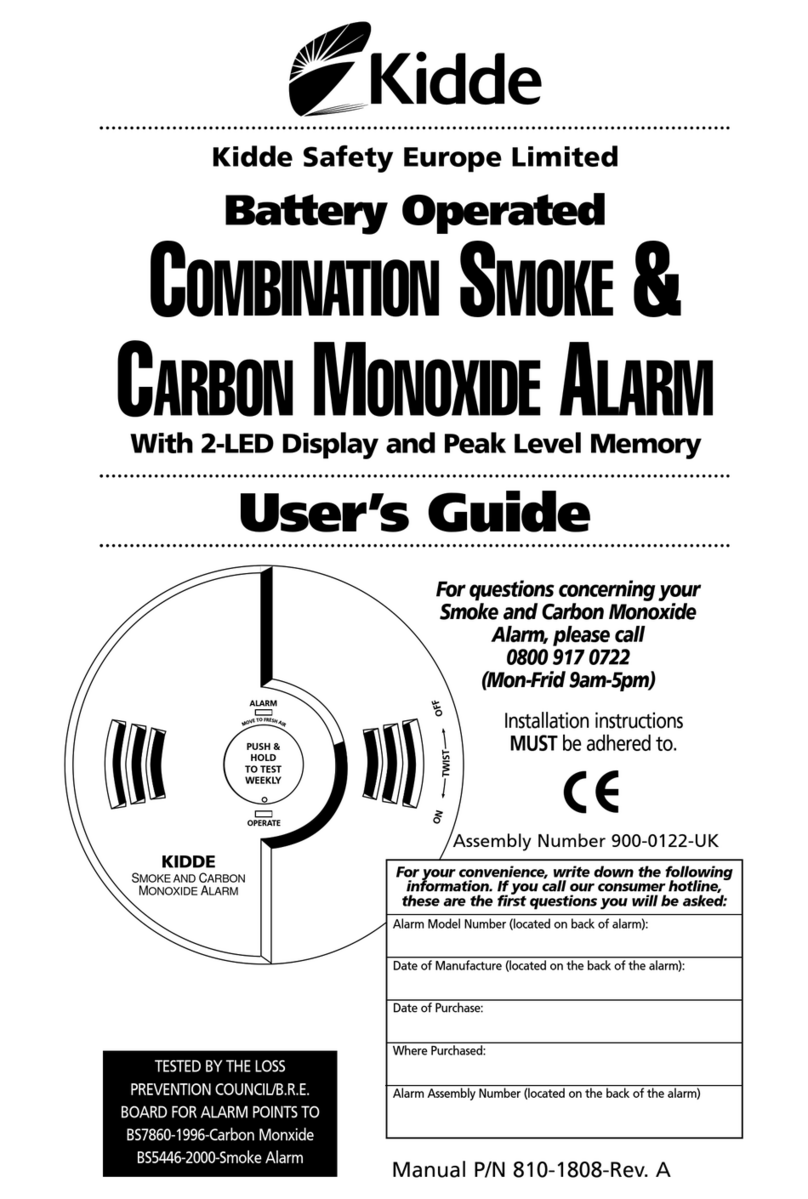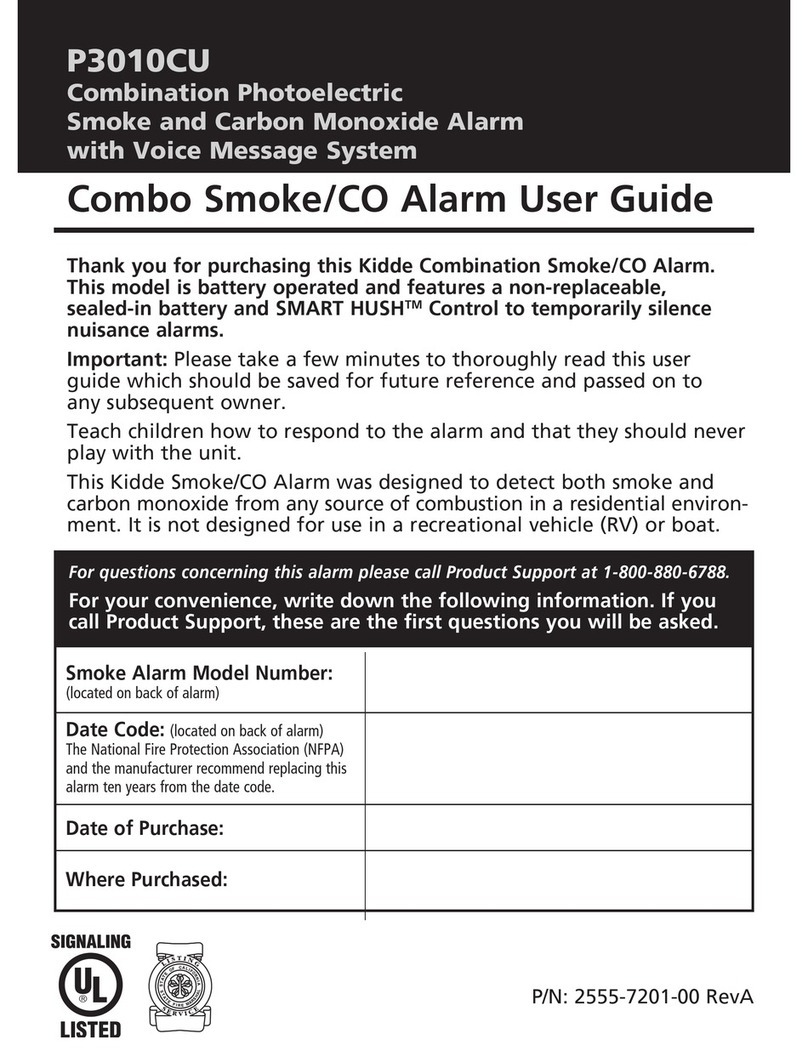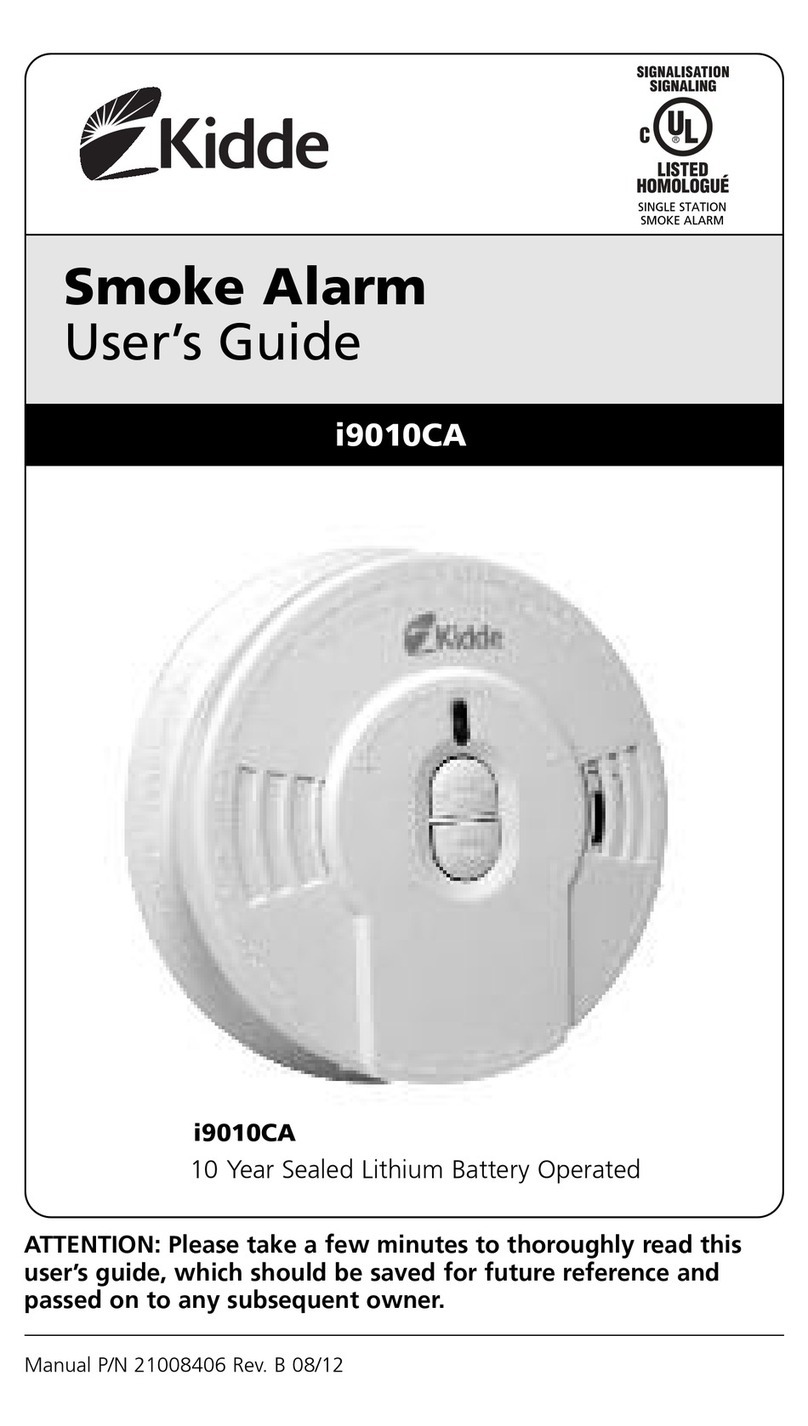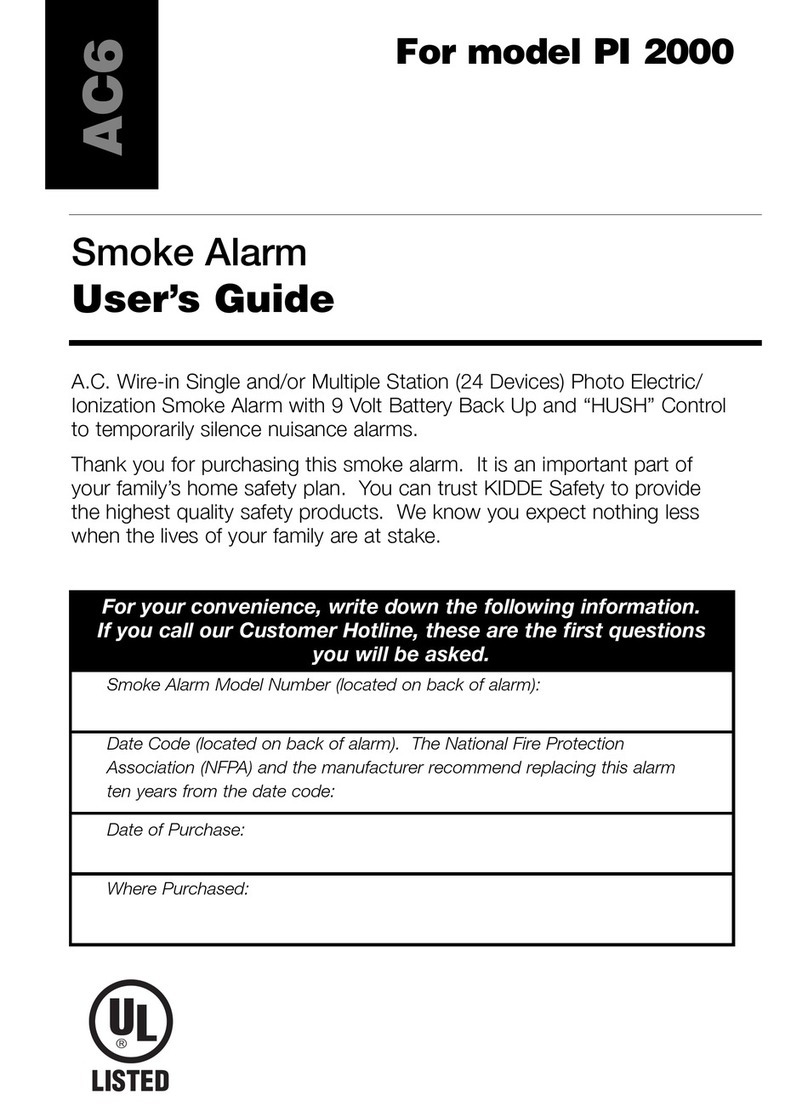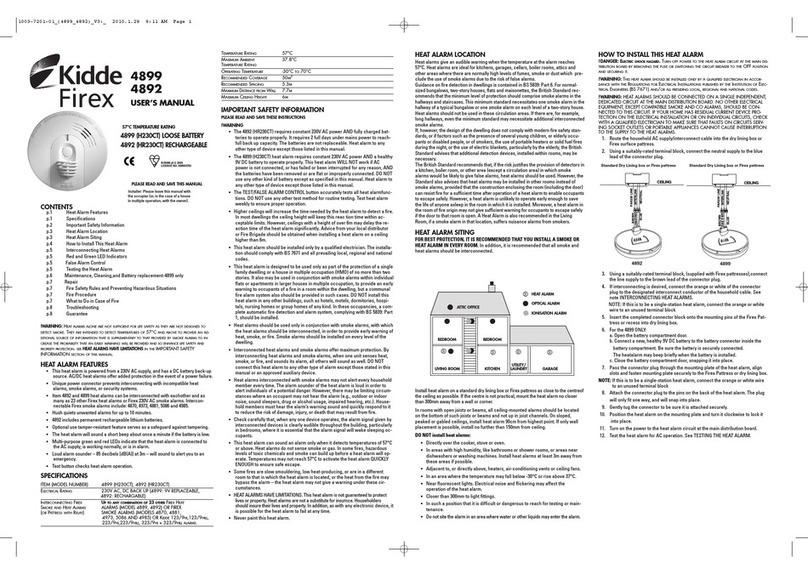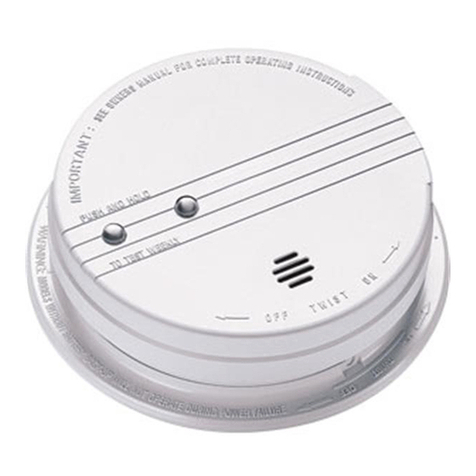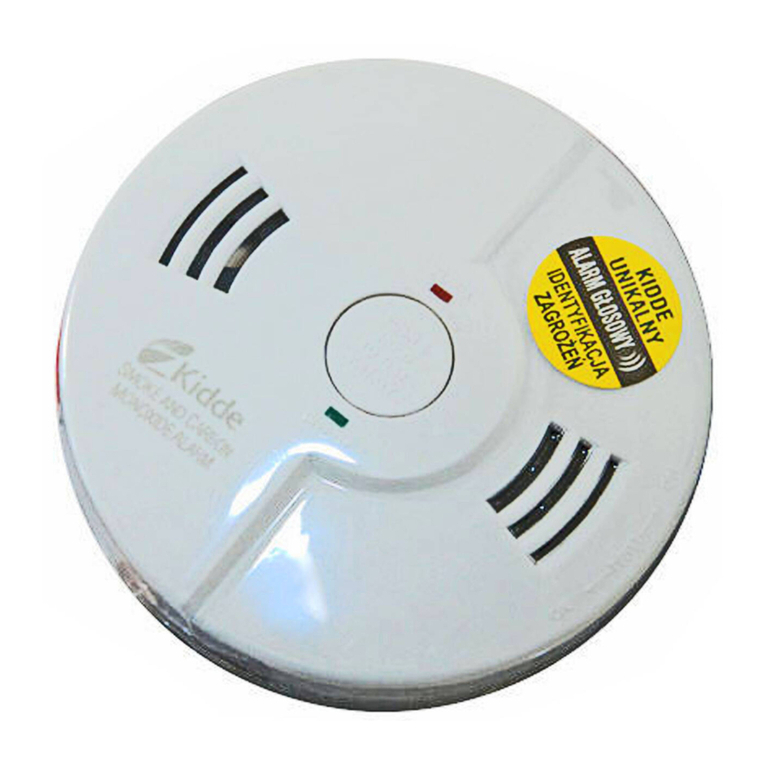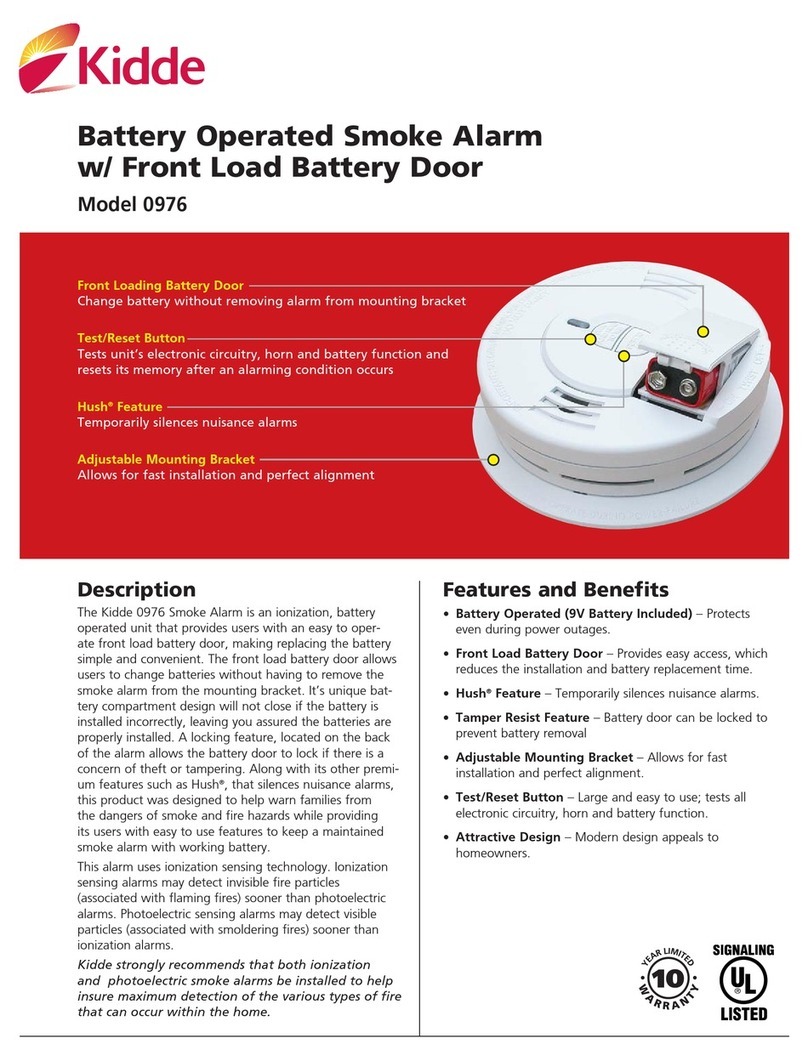
4. OPERATION AND TESTING
OPERATION:Thesmokealarmisoperatingonceafreshbatteryis
installedandtestingiscomplete.Whenproductsofcombustion
aresensed,theunitsoundsaloud85dbpulsatingalarmuntilthe
air is cleared.
HUSHCONTROL:The“HUSH”featurehasthecapabilityof
temporarily desensitizing the alarm circuit for approximately 10
minutes.Thisfeatureistobeusedonlywhenaknownalarm
condition, such as smoke from cooking activates the alarm. The
smokealarmisdesensitizedbypushingthe“HUSH”buttononthe
smoke alarm cover. If the smoke is not too dense, the alarm will
silenceimmediatelyandtheredLEDwillflashevery10seconds
for approximately 10 minutes. This indicates that the alarm is in a
temporarily desensitized condition. The smoke alarm will automati-
cally reset after approximately 10 minutes, and sound the alarm if
smokeisstillpresent.The“HUSH”featurecanbeusedrepeatedly
untiltheairhasbeenclearedoftheconditioncausingthealarm.
NOTE: DENSE SMOKE WILL OVERRIDE THE HUSH CONTROL
FEATURE AND SOUND A CONTINUOUS ALARM.
CAUTION: BEFORE USING THE ALARM HUSH FEATURE,
IDENTIFY THE SOURCE OF THE SMOKE AND BE CERTAIN
A SAFE CONDITION EXISTS.
FLASHINGLEDLIGHT:Thissmokealarmisequippedwithaflash-
ingredindicatorlight.Thelightislocatedunderthetestbutton
and will flash every 30-40 seconds to indicate that the smoke
alarm is receiving power.
SMOKESENSINGCHAMBEROPERATION:Thisalarmwill“chirp”
ifanyofthecomponentsinthesmokesensingchamberfail.This
chirpwilloccurbetweentheflashesoftheredLEDindicatorlight.
(IfthechirpoccursatthesametimeastheredLEDflash,seesec-
tion6forlowbatteryinformation.)
TESTING:Testbypushingthetestbuttononthecoverandhold-
ing it down for a minimum of 5 seconds. This will sound the alarm
iftheelectroniccircuitry,horn,andbatteryareworking.Ifno
alarmsounds,theunithasdefectivebatteriesorotherfailure.DO
NOT use an open flame to test your alarm, you could damage the
alarmorignitecombustiblematerialsandstartastructurefire.
